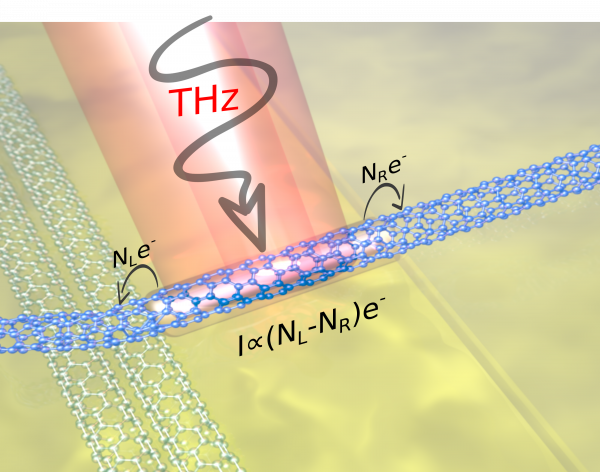Metallic carbon nanotube quantum dots with broken symmetries as a platform for tunable terahertz detection
Generating and detecting radiation in the technologically relevant range of the so-called terahertz gap (0.1–10 THz) is challenging because of a lack of efficient sources and detectors. Quantum dots in carbon nanotubes have shown great potential to build sensitive terahertz detectors, usually based on photon-assisted tunneling. A recently reported mechanism combining resonant quantum dot transitions and tunneling barrier asymmetries results in a narrow linewidth photocurrent response with a large signal-to-noise ratio under weak THz radiation. That device was sensitive to one frequency, corresponding to transitions between equidistant quantized states.
In this work, using numerical simulations together with scanning tunneling spectroscopy studies of a defect-induced metallic zigzag single-walled carbon nanotube quantum dot, Buch et al. show that breaking simultaneously various symmetries in metallic nanotube quantum dots of arbitrary chirality strongly relaxes the selection rules in the electric dipole approximation and removes energy degeneracies. This leads to a richer set of allowed optical transitions spanning frequencies from 1 THz to several tens of THz, for a ∼10 nm quantum dot. Based on these findings, the group proposes a terahertz detector device based on a metallic single-walled carbon nanotube quantum dot defined by artificial defects. Depending on its length and contacts transparency, the operating regimes range from a high-resolution gate-tunable terahertz sensor to a broadband terahertz detector. Their calculations indicate that the device is largely unaffected by temperatures up to 100 K, making carbon nanotube quantum dots with broken symmetries a promising platform to design tunable terahertz detectors that could operate at liquid nitrogen temperatures.

Propose device to be used as eiher a high-resolution gate-tunable terahertz sensor or a broadband terahertz detector.



